Introduction
Chilled white-cut chicken, or bái qiē jī in Mandarin, is a iconic dish in Cantonese cuisine renowned for its simplicity, delicate flavors, and refreshing texture. This dish embodies the philosophy of Chinese cooking: enhancing natural tastes rather than masking them. The preparation method—poaching the chicken until tender, then shocking it in ice water—results in succulent meat with a silky skin that glistens under a glossy soy-ginger dressing. Whether served as a centerpiece at family gatherings or a light summer meal, chilled white-cut chicken is a testament to the beauty of minimalist cooking. This article will guide you through every step of crafting this dish, from selecting the finest ingredients to mastering the poaching technique, ensuring your chicken emerges with the perfect balance of tenderness and flavor.
The Philosophy Behind White-Cut Chicken
Unlike fried or heavily seasoned poultry dishes, white-cut chicken celebrates the chicken’s inherent qualities. The term “white-cut” refers to the absence of coloring agents like soy sauce during cooking; instead, the meat’s pale hue is preserved, allowing its pure taste to shine. This dish traces its roots to Guangdong province, where chefs prioritize freshness and texture. The chilled presentation, a hallmark of Cantonese cold platters, transforms the chicken into a palate-cleansing delight ideal for hot climates.
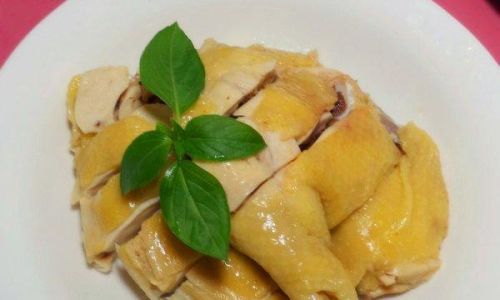
Ingredients and Equipment
To achieve restaurant-quality results, gather the following:
- 1 whole chicken (3–4 lbs/1.3–1.8 kg): Opt for a free-range or organic bird for superior flavor and tenderness.
- 8 cups (1.9 liters) water (for poaching).
- 1 thumb-sized piece fresh ginger, peeled and sliced.
- 4 scallions, trimmed and cut into 3-inch segments.
- 1 tablespoon kosher salt (for seasoning the broth).
- Ice cubes (enough to fill a large bowl halfway).
- For the dipping sauce:
- 3 tablespoons finely julienned fresh ginger.
- 3 tablespoons finely chopped scallions (green parts only).
- 1/4 cup peanut oil (or neutral oil like vegetable).
- 2 tablespoons premium soy sauce.
- 1 teaspoon white sugar.
- Optional: 1 teaspoon sesame oil, chili oil, or cilantro for garnish.
Equipment Checklist:
- A large stockpot (8-quart capacity or larger).
- Tongs or a slotted spoon.
- A heatproof bowl for the ice bath.
- A sharp chef’s knife and cutting board.
- A meat thermometer (optional but recommended).
- A serving platter.
Step 1: Preparing the Chicken
Begin by rinsing the chicken thoroughly under cold water. Pat it dry with paper towels to remove excess moisture, which ensures even cooking. Trim any visible fat pockets near the cavity opening, as these can make the broth greasy. Some chefs advocate massaging the chicken with a mixture of salt and Shaoxing wine to eliminate impurities, but this step is optional.
Step 2: Crafting the Poaching Liquid
In the stockpot, combine 8 cups of water, sliced ginger, scallion segments, and salt. Bring the mixture to a gentle simmer over medium heat. Avoid boiling vigorously, as rapid bubbles can toughen the chicken’s skin. The poaching liquid should hover between 160–180°F (71–82°C)—a bare simmer with occasional small bubbles.
Step 3: The Poaching Process
Gently lower the chicken into the pot using tongs, breast-side up. Ensure the bird is fully submerged; if necessary, add more water. Maintain the simmer and set a timer for 25–30 minutes. For precise doneness, use a meat thermometer inserted into the thickest part of the thigh (avoiding the bone); it should register 165°F (74°C).
Pro Tip: To prevent the chicken from floating, place a heatproof plate or small bowl on top to weigh it down.
Step 4: The Ice Bath Shock
While the chicken poaches, prepare an ice bath in a large bowl. Fill it halfway with ice and cold water. Once cooked, immediately transfer the chicken to the ice bath using tongs. This sudden temperature drop halts cooking, firms the skin, and locks in juices. Let the chicken chill for 15–20 minutes, turning occasionally to ensure even cooling.
Step 5: Drying and Resting
After chilling, remove the chicken from the ice bath and pat it dry with paper towels. Pay special attention to the cavity to prevent sogginess. Place the bird on a wire rack set over a baking sheet and let it air-dry in the refrigerator for 1–2 hours. This step further tightens the skin, yielding a satisfying “snap” when bitten.
Step 6: Carving the Chicken
Using a sharp chef’s knife, carve the chicken into serving pieces. Start by removing the legs and wings, then slice the breast meat diagonally against the grain. For an elegant presentation, arrange the pieces on a platter, skin-side up, to showcase the glossy skin.
Mastering the Dipping Sauce
The dipping sauce, or jiang, elevates the chicken’s mild flavor. Heat the peanut oil in a small saucepan until it shimmers (around 325°F/163°C). In a heatproof bowl, combine the ginger, scallions, sugar, and soy sauce. Carefully pour the hot oil over the mixture—the sizzle will release aromatic compounds. Stir gently and let the sauce cool. For extra depth, add a splash of sesame oil or a pinch of chili flakes.
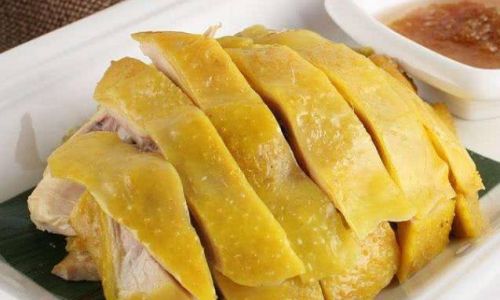
Serving Suggestions
Chilled white-cut chicken pairs beautifully with:
- Steamed jasmine rice or congee.
- Pickled vegetables (e.g., daikon or cucumber).
- A side of stir-fried greens (bok choy or gai lan).
- A chilled bowl of sweetened red bean soup for dessert.
Variations and Regional Twists
- Sichuan-Style: Add crushed Sichuan peppercorns and chili oil to the dipping sauce for a numbing heat.
- Hainanese Adaptation: Serve the chicken with fragrant rice cooked in chicken broth and a side of dark soy sauce.
- Herb-Infused: Tuck pandan leaves or lemongrass into the cavity during poaching for a floral aroma.
Troubleshooting Common Pitfalls
- Rubbery Skin: Ensure the ice bath is sufficiently cold and the chicken is fully submerged.
- Dry Meat: Avoid overcooking; use a thermometer and remove the chicken promptly at 165°F.
- Bland Flavor: Rub the chicken with a thin layer of salt before poaching to enhance seasoning.
Health and Nutritional Notes
A 3.5-ounce (100-gram) serving of white-cut chicken (without skin) provides approximately 165 calories, 31 grams of protein, and 3.6 grams of fat. The dish is rich in niacin, vitamin B6, and phosphorus. Opting for skinless portions reduces saturated fat content, aligning with heart-healthy diets.
The Cultural Significance of White-Cut Chicken
In Cantonese tradition, white-cut chicken is a symbol of prosperity and purity, often served during festivals like Chinese New Year. Its unadorned presentation reflects Confucian ideals of humility and respect for ingredients. The dish’s minimalist approach also mirrors the wabi-sabi philosophy, finding beauty in imperfection—a testament to the chicken’s natural form.
Conclusion: A Dish That Transcends Time
Chilled white-cut chicken is more than a recipe; it’s a meditation on patience and precision. From the careful simmer of the poaching liquid to the transformative ice bath, each step honors the chicken’s essence. Whether you’re a novice cook or a seasoned chef, mastering this dish offers a profound connection to culinary tradition. Serve it at your next gathering and watch as guests marvel at the interplay of tender meat, crisp skin, and aromatic sauce—a symphony of flavors that needs no embellishment.
Final Tip: Leftovers make exceptional additions to salads or sandwiches. Simply shred the meat and toss with a splash of soy sauce and sesame oil.
With this guide, you’re equipped to create a dish that is both timeless and transcendent—a true masterpiece of Cantonese cuisine.

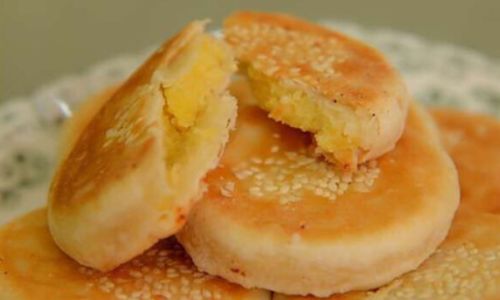
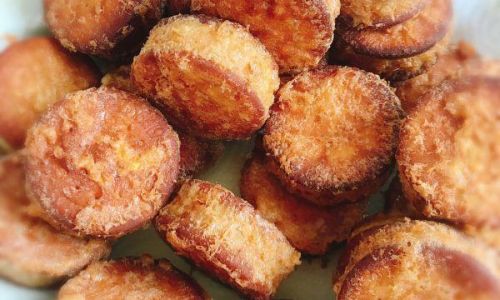
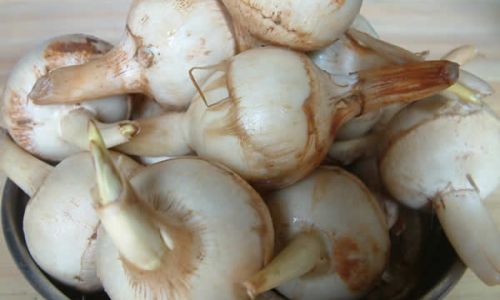
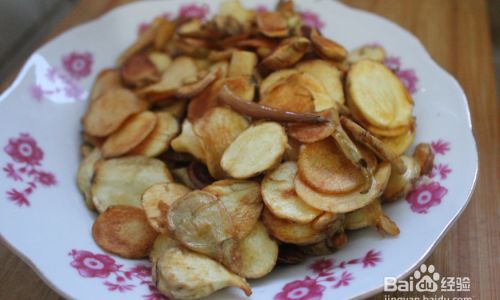
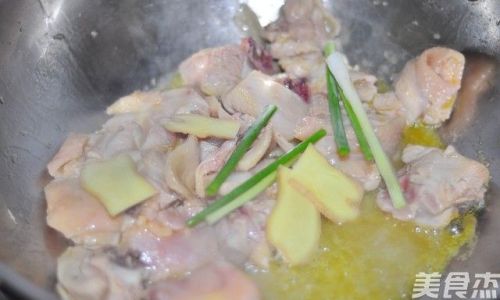
0 comments